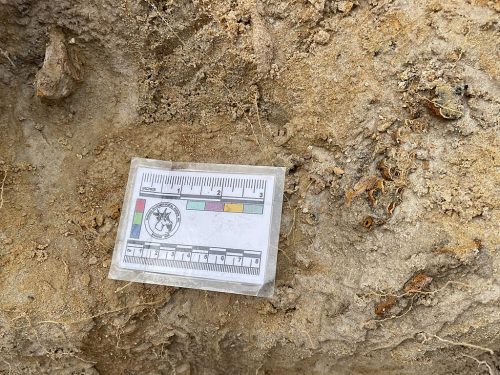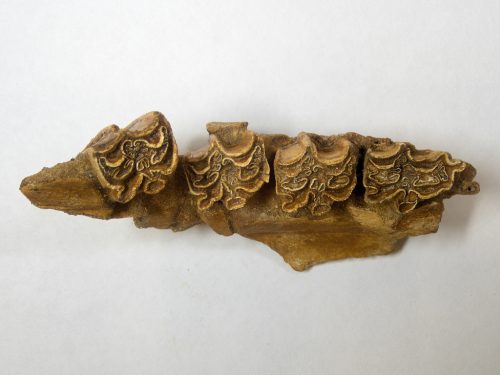While digging in our west pit on March 9th, volunteer, Bri Blaga found a heavily eroded horse tooth.

The layers in her square were dipping almost completely vertically and the sand was yellow/orange instead of our typical white beach sand. There were other fragments nearby so she continued digging carefully around the area.
Meanwhile, staff were finishing creating a plaster jacket in the eastern pit when we were informed that there were now several teeth. Having only ever found up to two associated horse teeth at the site, we were skeptical but excited.
Being found at the end of the day, we had to close the site, but retired collections manager, Richard Hulbert jacketed and removed the specimen on March 11th.

Volunteer, Ken Marks, prepared the specimen from March 12th through the 26th. The specimen was poorly mineralized and delicate but was well consolidated with B-72 and prepared to reveal some gorgeous detail on the occlusal surfaces of the teeth with their intricate swirling plications.
Richard Hulbert then identified the specimen as belonging to the three-toed horse, Nannippus aztecus. The fossil is a partial right maxilla with the following upper right tooth positions (from right to left in the occlusal view image): a tiny root from the missing premolar P1, the more elongated P2, followed by P3, P4, and the M1 molar (displaced higher than the premolars). The isolated tooth originally found by Bri turned out to be the upper right M2. From the height of the teeth, this was a younger individual and the M3 molar had likely not yet formed.
We have 40 specimens of isolated 3-toed horse teeth in the collection from Montbrook and 2 fragmentary premaxilla but this is the first series of associated (and mostly articulated) cheek teeth. This is an excellent addition to the fossil record of this species from Montbrook!

